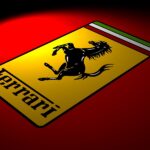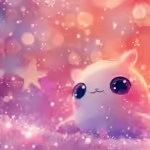Introduction to Minecraft (2009) Game Icons and Banners
Minecraft, launched in 2009, quickly became a pioneering force in the gaming world, renowned for its expansive sandbox environment and creative freedom. One of the significant aspects that have contributed to the game’s enduring popularity is its use of diverse and richly detailed game icons and banners. These visual elements are more than merely decorative; they are integral to both the aesthetic appeal and functional gameplay, offering players unique ways to personalize and enhance their in-game experience.
The origin of Minecraft’s visual elements dates back to its early development phases, where simplicity and pixelated charm were central themes. As the game evolved, so did its icons and banners. These elements have transformed from simple graphics to intricate designs that serve multiple purposes. Game icons, such as those representing tools, resources, and achievements, play a critical role in the interface, helping players quickly identify items and navigate their inventory efficiently. The intuitive design of these icons ensures that even new players can grasp their significance without needing extensive explanations.
Banners, on the other hand, offer a means for players to express their creativity and mark their territory. Available in a myriad of colors and patterns, they allow for endless customization opportunities. Players can craft unique banners to represent guilds, decorate their builds, or set waypoints across their expansive worlds. The combination of icons and banners in Minecraft has cultivated a culture of personalization, enabling players to leave their distinct mark on the game’s universe.
In essence, Minecraft’s game icons and banners are foundational elements that blend aesthetic brilliance with practical utility. They embody the spirit of the game, fostering creativity while simultaneously enhancing user interaction. As we delve deeper into their specific features and applications, it becomes evident why these visual components are cherished by the global Minecraft community.
Designing and Crafting Icons and Banners in Minecraft
Minecraft, the iconic sandbox game launched in 2009, allows players to create and customize their world extensively, with icons and banners being two particularly versatile elements. Crafting and designing these elements require an understanding of various tools, materials, and mechanics within the game.
To start crafting banners, players need six wool blocks and a stick. The colored wool used determines the base color of the banner, making it essential to gather the desired dye in advance. The crafting table interface in Minecraft simplifies this process. Simply place the six wool blocks in the top six slots and the stick in the bottom-middle slot. Once crafted, the blank banner can be enhanced with different patterns and colors at a loom, introduced in the later updates.
Using the loom, an incredibly useful tool for banner design, players can combine up to six layers of patterns. These patterns range from simple stripes to intricate designs like the skull and crossbones. Patterns are created using a combination of dyes and banner pattern items. Each layer of design requires placing the banner in the loom along with the dye and the corresponding pattern, giving a vast spectrum of creative freedom for players to express their imagination.
Similarly, creating icons involves an understanding of Minecraft’s pixelated art style. Icons, typically used in item frames, HUD displays, and custom maps, necessitate precision and creativity. The crafting materials for icons include various blocks, dyes, and the utilization of in-game features like the cartography table for custom maps. Players can sketch designs using tools like graph paper or digital tools to translate complex images into simpler, pixel-based art suitable for Minecraft’s aesthetic.
The meticulous process of choosing patterns, colors, and symbols significantly enhances the in-game experience. A well-designed banner or uniquely crafted icon not only adds a personal touch to builds but also serves functional roles such as identifying teams, marking locations, or even sending messages through in-game lore. By understanding the crafting mechanics and creative nuances, players can transform basic materials into distinctive visual elements that contribute vibrantly to the Minecraft (2009) game community.
Within the expansive world of Minecraft (2009), icons and banners play a significant role in enhancing gameplay through various practical applications. These visual elements are not merely decorative; they serve as strategic tools for players to communicate, navigate, and express themselves creatively.
Marking Territories
One of the primary uses of banners in Minecraft is to mark territories. Players often use these personalized banners to delineate the boundaries of their bases or settlements. By placing customized designs at the perimeters, players can assert ownership and ward off potential intruders. This visual marker system is particularly useful in multiplayer settings, where clear territory demarcations help maintain order and prevent disputes among players.
Decorating Bases
Banners and icons serve as essential decorative elements in adorning bases and structures. Through the customization of banners with various patterns and colors, players can transform their in-game spaces, making them more aesthetically pleasing and distinctive. These decorations not only enhance the visual appeal but also contribute to the overall ambiance, making each base unique and reflective of the player’s style.
Creating Navigation Markers
In the vast and often labyrinthine environments of Minecraft, navigation can be challenging. Here, banners and icons become invaluable assets. Players use these elements to create waypoints and landmarks, assisting them in navigating through complex cave systems, forests, or expansive plains. Distinctive banners signal important locations, such as resource sites or path intersections, ensuring that players can traverse the world more efficiently.
Strategic Uses in Multiplayer Settings
When playing in multiplayer mode, icons and banners facilitate better communication and coordination among team members. Players frequently deploy banners at strategic points to indicate rally points, defensive positions, or planned areas for collective tasks. This use of visual indicators ensures that all team members are on the same page, fostering effective collaboration and strategic planning during gameplay.
Overall, the strategic and decorative utilization of icons and banners in Minecraft (2009) significantly enriches the gaming experience, providing players with tools for communication, navigation, and self-expression within the dynamic and immersive Minecraft universe.
Showcasing Community Creations and Icon/Banner Contests
One of the most remarkable aspects of Minecraft (2009) is the vibrant community that thrives within the game. This community’s creativity is vividly displayed through the myriad of custom icons and banners that players craft. These visual elements are not only integral to personalizing gameplay but also serve as a means of artistic expression.
Player-made icons and banners range from intricate designs depicting mythical creatures to minimalistic emblems symbolizing player clans. Some standout examples include banners that emulate famous artworks, heraldic symbols, or even pixel art recreations of popular culture figures. These creations are often shared on forums, social media platforms, and dedicated Minecraft communities, fostering a sense of accomplishment and recognition among creators.
In addition to individual creativity, the Minecraft community regularly organizes contests and challenges dedicated to icon and banner creation. These events provide opportunities for players to showcase their talents, compete for in-game rewards, and gain prestige. Examples of these contests include themed challenges, where players are tasked with creating banners or icons based on specific prompts, such as historical events, fantasy genres, or seasonal holidays. Judging panels, which can include seasoned players and well-known content creators, evaluate entries based on criteria like originality, adherence to the theme, and overall aesthetic appeal.
Furthermore, Minecraft’s game mechanics and tools, such as dyeing, pattern crafting, and the use of looms, have been integral in pushing the boundaries of what players can achieve with their designs. These tools allow for an extensive range of customization options, ensuring that each banner or icon can be truly unique. This combination of community-driven creativity and versatile in-game tools makes Minecraft (2009) a continually evolving canvas for artistic expression.
Ultimately, the ongoing engagement in design contests and the showcase of community creations not only enhance the visual landscape of the game but also contribute to a shared cultural experience among players. By spotlighting these efforts, we highlight the immense creativity and camaraderie that define the Minecraft community.
You May Also Like




